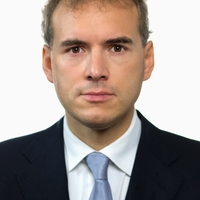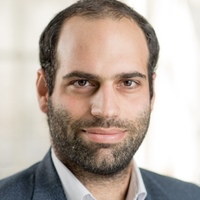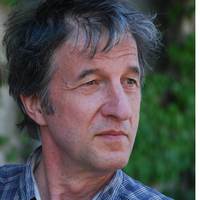Papers by Kathleen Crowther
and Generation in Re.,formation German ly
account of the creation andfall of mankind. In the creation of the child in the womb, sixteenthce... more account of the creation andfall of mankind. In the creation of the child in the womb, sixteenthcentury Germans saw an echo of the original divine act of creation. And in the sufferings ofa woman in labor they saw a reenactment of Christ's Passion. Discussions ofreproduction thus served as a startingpointfor meditations on original sin, human mortality, and the relationship between body and so uZ
MARJORIE ELIZABETH PLUMMER. From Priest's Whore to Pastor's Wife: Clerical Marriage and the Process of Reform in the Early German Reformation
The American Historical Review, 2013
The American Historical Review, 2014
der 2004 schon mit einem Buch über das Sakrament der Beichte hervorgetreten ist, bildet die "Refo... more der 2004 schon mit einem Buch über das Sakrament der Beichte hervorgetreten ist, bildet die "Reformation des Leidens" ein weiteres Hauptanliegen der evangelischen Geistlichkeit. In dieser epochenübergreifenden Studie schöpft er aus einer beeindruckenden Quellenkenntnis, um Kontinuitäten und Diskontinuitäten in der Trostliteratur des christlichen Abendlandes zu verdeutlichen. Zu Ersteren gehört die Ermahnung, Anfechtungen und Schicksalsschläge als Wille Gottes geduldig zu ertragen; zu Letzteren die Ablehnung ihres heilsfördernden Po
The American Historical Review, 2014
der 2004 schon mit einem Buch über das Sakrament der Beichte hervorgetreten ist, bildet die "Refo... more der 2004 schon mit einem Buch über das Sakrament der Beichte hervorgetreten ist, bildet die "Reformation des Leidens" ein weiteres Hauptanliegen der evangelischen Geistlichkeit. In dieser epochenübergreifenden Studie schöpft er aus einer beeindruckenden Quellenkenntnis, um Kontinuitäten und Diskontinuitäten in der Trostliteratur des christlichen Abendlandes zu verdeutlichen. Zu Ersteren gehört die Ermahnung, Anfechtungen und Schicksalsschläge als Wille Gottes geduldig zu ertragen; zu Letzteren die Ablehnung ihres heilsfördernden Po

De sphaera of Johannes de Sacrobosco in the Early Modern Period, 2020
This paper analyzes sixteenth-century commentaries on Johannes de Sacrobosco's Sphaera in Portugu... more This paper analyzes sixteenth-century commentaries on Johannes de Sacrobosco's Sphaera in Portuguese and Spanish. Between the fifteenth and seventeenth centuries, there were more translations of the Sphaera into Castilian and Portuguese than into all other European vernaculars combined. A major reason for the interest in Sphaera translations in Spain and Portugal was that the basic astronomical and geographical knowledge contained in this text could be used for navigation. Because of their enormous interests in overseas exploration and colonization, Iberian monarchs supported the development of cosmography, a subject that combined mathematics, astronomy, and geography. The astronomical information in the Sphaera was also valued on the Iberian Peninsula for its applications to astrology. Finally, the Sphaera was critical to a Christian education because it taught readers to appreciate the wonders of God's creation. Spanish and Portuguese commentaries on Sacrobosco's Sphaera reflect this mix of practical, political, and spiritual concerns.

Paracelsus: Medicine, Magic and Mission at the End of Time (review)
ABSTRACT Theophrastus von Hohenheim (1493-1541), better known as Paracelsus, is one of the most e... more ABSTRACT Theophrastus von Hohenheim (1493-1541), better known as Paracelsus, is one of the most enigmatic figures of the sixteenth century. His writings are voluminous, and his theories are complex. He excited strong and contradictory responses from his contemporaries. He led a peripatetic existence, unable to find a stable source of income or patronage, and he made enemies of powerful people. He was accused of habitual drunkenness, filthy personal habits, bizarre behavior, and consorting with demons. But he also attracted a large and devoted following, especially in the decades after his death. He was called "the Luther of medicine" (p. 2), and he repeatedly cured patients (like the Basel publisher Johann Froben) after other doctors had given up on them. Between 1560 and 1645, 345 editions of his works were published (p. 35), making him one of the most influential medical writers of the early modern period. Despite Paracelsus's demonstrable importance in the history of medicine, the last scholarly biography in English was Walter Pagel's book of 1958. Charles Webster's excellent account of the life and career of Paracelsus provides a much needed new biography of this fascinating figure, one that reflects the developments in Paracelsus scholarship in the decades since Pagel's work appeared. When Pagel wrote, historians of medicine and science tended to focus exclusively on Paracelsus's medical and natural philosophical writings and to ignore his theological writings. Although most of Paracelsus's medical and natural philosophical writings were published in the second half of the sixteenth century, almost all of his theological writings remained in manuscript until the second half of the twentieth century. However, in recent years, Paracelsus scholars have mined the theological writings and have argued that Paracelsus's medical theories were inextricably intertwined with his religious views. Webster's book synthesizes much of this recent specialized scholarship (including his own work) and makes it accessible to a nonspecialist audience. He shows, for example, that Paracelsus's tripartite matter theory, in which all things in the cosmos are made of sulfur, mercury and salt, was connected to his understanding of the Trinity. According to Webster, "The three new principles were . . . described in terms of both unity and trinity . . . and the progressive refinement that they supervised in nature was described as becoming 'transfigured, glorified' . . .—terminology usually encountered with respect to the Creator, the resurrection of Christ, or . . . with regard to the Eucharist" (p. 135). Not only does Webster situate Paracelsus's medical ideas in the context of his theological views, he also presents Paracelsus as a religious reformer first and a medical reformer second. Accordingly, the bulk of the book is devoted to Paracelsus's religious writings. Webster treats Paracelsus as a serious theologian in his own right, one who was critical both of the "magisterial" reformers Martin Luther and Huldrych Zwingli as well as of the more radical Anabaptists sects. In theological matters, Paracelsus "maintain[ed] a position of resolute independence" (p. 78). His Eucharistic theology, for example, was distinct from "Catholic transubstantiation, Luther's consubstantiation, and Zwingli's symbolism" (p. 200). In addition to explicating some of Paracelsus's major ideas, this book provides nonspecialists with a fine introduction to the world of the sixteenth-century Holy Roman Empire. Webster paints a vivid picture of the social upheavals caused by recurrent famines and peasant revolts, the intellectual currents of humanism and neo-Platonism, the looming fear of Turkish invasion, and, of course, the tumultuous religious controversies. The second chapter, "The Power of Print," is an excellent overview of the print market in early-modern German-speaking areas, ranging from the humanist presses of Basel to the "popular" presses of Strasbourg. In sum, Webster has produced an excellent introduction to Paracelsus and his age that should certainly replace Pagel's work as the standard biography in English. 1. Walter Pagel, Paracelsus: An Introduction to Philosophical Medicine in the Era of the Renaissance (Basel: Karger, 1958; 2nd rev. ed., Basel: Karger, 1982).

The Virgin and the Globe
In 1616, in a small village in northern Spain, a precociously brilliant teenage girl named María ... more In 1616, in a small village in northern Spain, a precociously brilliant teenage girl named María Coronel y Arana composed a text that she titled Tratado sobre la redondez de la tierra y de los habitantes de ella, in which she described the earth and its inhabitants and the ten celestial spheres revolving around the earth. Her stated purpose in writing was to praise God for the wonders of His creation and to inspire others to praise Him as well. The treatise begins: “Wonderful is the Lord as seen in the face of the earth, in having created it and in the providence with which He cares for it . . . what good reason to praise the Creator of such a structure, the giver of life to the universe!” This youthful work would probably not have survived into the twenty-first century except that María Coronel y Arana grew up to become Sor María of Ágreda, one of the most important and influential figures in early modern Spain. She was an abbess, a prominent spiritual leader,
The Fabrica of Andreas Vesalius: A Worldwide Descriptive Census, Ownership, and Annotations of the 1543 and 1555 Editions ed. by Dániel Margócsy, Mark Somos, and Stephen N. Joffe
Bulletin of the History of Medicine
Science and Religion
Early Science and Medicine
Journal for the History of Astronomy
This article presents four detailed case studies of sixteenth-century vernacular translations of ... more This article presents four detailed case studies of sixteenth-century vernacular translations of Sacrobosco's De sphaera. Previous scholarship has highlighted the important role of Sacrobosco's Sphere in medieval and early modern universities, where it served as an introductory astronomy text. We argue that the Sphere was more than a university teaching text. It was translated many times and was accessible to a wide range of people. The popularity of the Sphere suggests widespread interest in cosmological questions. We suggest that the text was a profitable one for early modern printers, who strove to identify books that would be reliable sellers. We also argue that the Sphere was not a static text. Rather, translators and editors added commentaries and other supplemental material that corrected and updated Sacrobosco's original text and
Adam and Eve in the Protestant Reformation (Cambridge and New York: Cambridge University Press, 2010), pp. xii + 293 illus, index, £50.00 $85.00 (hardcover), ISBN 978 0 521192361
Early science and medicine, 2014
Sexual Difference
Oxford Handbooks Online, 2016
Kathleen Crowther - Die leidige Seuche: Pest-Fälle in der Frühen Neuzeit (review) - Journal of Social History 40:4
The Science of Describing: Natural History in Renaissance Europe (review)
Isis, 2008

Paracelsus: Medicine, Magic and Mission at the End of Time (review)
Bulletin of the History of Medicine, 2010
ABSTRACT Theophrastus von Hohenheim (1493-1541), better known as Paracelsus, is one of the most e... more ABSTRACT Theophrastus von Hohenheim (1493-1541), better known as Paracelsus, is one of the most enigmatic figures of the sixteenth century. His writings are voluminous, and his theories are complex. He excited strong and contradictory responses from his contemporaries. He led a peripatetic existence, unable to find a stable source of income or patronage, and he made enemies of powerful people. He was accused of habitual drunkenness, filthy personal habits, bizarre behavior, and consorting with demons. But he also attracted a large and devoted following, especially in the decades after his death. He was called "the Luther of medicine" (p. 2), and he repeatedly cured patients (like the Basel publisher Johann Froben) after other doctors had given up on them. Between 1560 and 1645, 345 editions of his works were published (p. 35), making him one of the most influential medical writers of the early modern period. Despite Paracelsus's demonstrable importance in the history of medicine, the last scholarly biography in English was Walter Pagel's book of 1958. Charles Webster's excellent account of the life and career of Paracelsus provides a much needed new biography of this fascinating figure, one that reflects the developments in Paracelsus scholarship in the decades since Pagel's work appeared. When Pagel wrote, historians of medicine and science tended to focus exclusively on Paracelsus's medical and natural philosophical writings and to ignore his theological writings. Although most of Paracelsus's medical and natural philosophical writings were published in the second half of the sixteenth century, almost all of his theological writings remained in manuscript until the second half of the twentieth century. However, in recent years, Paracelsus scholars have mined the theological writings and have argued that Paracelsus's medical theories were inextricably intertwined with his religious views. Webster's book synthesizes much of this recent specialized scholarship (including his own work) and makes it accessible to a nonspecialist audience. He shows, for example, that Paracelsus's tripartite matter theory, in which all things in the cosmos are made of sulfur, mercury and salt, was connected to his understanding of the Trinity. According to Webster, "The three new principles were . . . described in terms of both unity and trinity . . . and the progressive refinement that they supervised in nature was described as becoming 'transfigured, glorified' . . .—terminology usually encountered with respect to the Creator, the resurrection of Christ, or . . . with regard to the Eucharist" (p. 135). Not only does Webster situate Paracelsus's medical ideas in the context of his theological views, he also presents Paracelsus as a religious reformer first and a medical reformer second. Accordingly, the bulk of the book is devoted to Paracelsus's religious writings. Webster treats Paracelsus as a serious theologian in his own right, one who was critical both of the "magisterial" reformers Martin Luther and Huldrych Zwingli as well as of the more radical Anabaptists sects. In theological matters, Paracelsus "maintain[ed] a position of resolute independence" (p. 78). His Eucharistic theology, for example, was distinct from "Catholic transubstantiation, Luther's consubstantiation, and Zwingli's symbolism" (p. 200). In addition to explicating some of Paracelsus's major ideas, this book provides nonspecialists with a fine introduction to the world of the sixteenth-century Holy Roman Empire. Webster paints a vivid picture of the social upheavals caused by recurrent famines and peasant revolts, the intellectual currents of humanism and neo-Platonism, the looming fear of Turkish invasion, and, of course, the tumultuous religious controversies. The second chapter, "The Power of Print," is an excellent overview of the print market in early-modern German-speaking areas, ranging from the humanist presses of Basel to the "popular" presses of Strasbourg. In sum, Webster has produced an excellent introduction to Paracelsus and his age that should certainly replace Pagel's work as the standard biography in English. 1. Walter Pagel, Paracelsus: An Introduction to Philosophical Medicine in the Era of the Renaissance (Basel: Karger, 1958; 2nd rev. ed., Basel: Karger, 1982).
The Lutheran Book of Nature
The Book of Nature and Humanity in the Middle Ages and the Renaissance, 2013
Sacred Philosophy, Secular Theology: The Mosaic Physics Of Levinus Lemnius (1505–1568) And Francisco Valles (1524–1592)
Nature and Scripture in the Abrahamic Religions: Up to 1700 (2 vols) Nature and Scripture in the Abrahamic Religions: Up to 1700, 2008
... On the medieval bestiary tradition see Clark and McMunn 1989. 63 For a more extended discussi... more ... On the medieval bestiary tradition see Clark and McMunn 1989. 63 For a more extended discussion of the differences between medieval and early mod-ern writing on animals, see Ashworth 1990 and Kathleen Crowther-Heyck 2003. 64 Stannard 1978, esp. 443449. ...

Paracelsus: Medicine, Magic and Mission at the End of Time (review)
Bulletin of the History of Medicine
Theophrastus von Hohenheim (1493-1541), better known as Paracelsus, is one of the most enigmatic ... more Theophrastus von Hohenheim (1493-1541), better known as Paracelsus, is one of the most enigmatic figures of the sixteenth century. His writings are voluminous, and his theories are complex. He excited strong and contradictory responses from his contemporaries. He led a peripatetic existence, unable to find a stable source of income or patronage, and he made enemies of powerful people. He was accused of habitual drunkenness, filthy personal habits, bizarre behavior, and consorting with demons. But he also attracted a large and devoted following, especially in the decades after his death. He was called "the Luther of medicine" (p. 2), and he repeatedly cured patients (like the Basel publisher Johann Froben) after other doctors had given up on them. Between 1560 and 1645, 345 editions of his works were published (p. 35), making him one of the most influential medical writers of the early modern period. Despite Paracelsus's demonstrable importance in the history of medicin...
Alisha Rankin Panaceia’s Daughters: Noblewomen as Healers in Early Modern Germany (Chicago: University of Chicago Press, 2013), pp. 312, $40.00, ISBN 978 022 69253 87
Early Science and Medicine, 2014
Inventing the Indigenous: Local Knowledge and Natural History in Early Modern Europeby Alix Cooper











Uploads
Papers by Kathleen Crowther